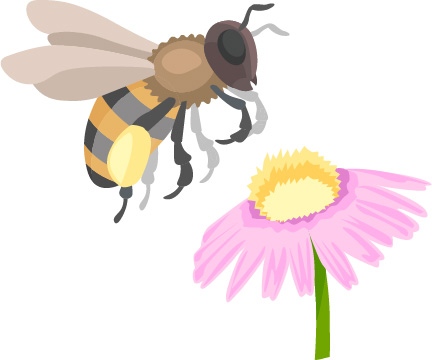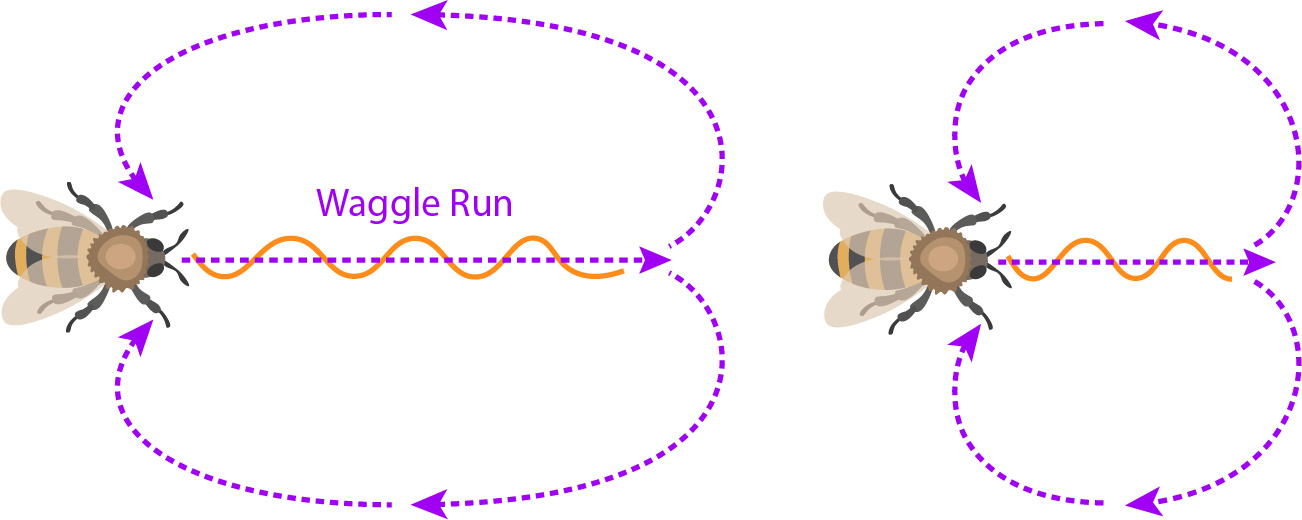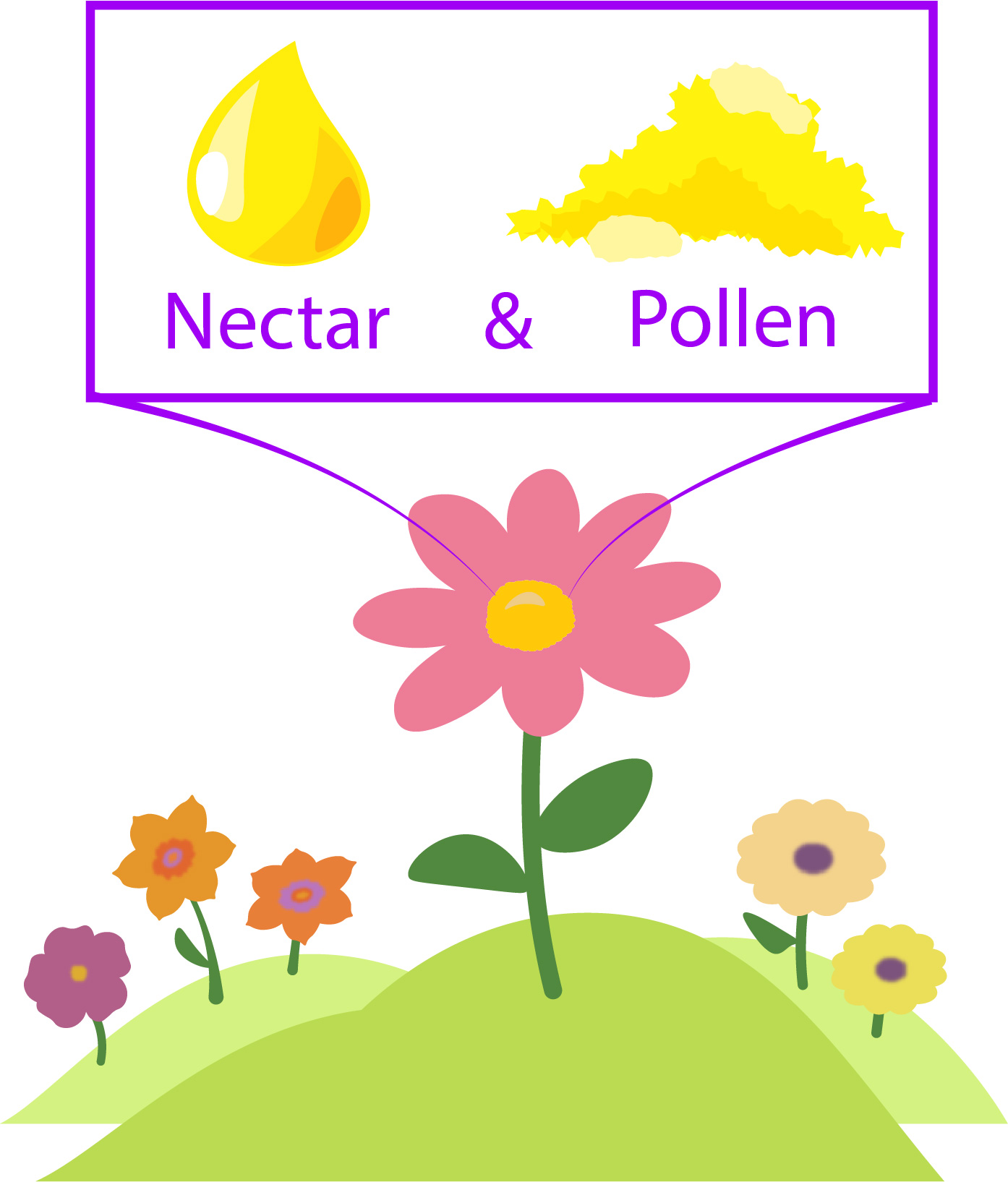Introduction
Menu
Waggle dance | Round dance | Flowers
Overview

Teamwork
Bees in a colony work with each other to gather food. They try to find the most pollen and nectar in the least amount of time possible.
Finding the best flowers
Some flowers have more pollen and nectar than others. When a good flower patch is found, bees recruit other bees from their colony to the patch. But how do they tell those bees where to find the best flowers?
Communication
Bees communicate flower location using special dances inside the hive. One bee dances, while other bees watch to learn the directions to a specific flower patch. The dancing bee smells like the flower patch, and also gives the watching bees a taste of the nectar she gathered. Smell and taste helps other bees find the correct flower patch.
Bees use two different kinds of dances to communicate information: the waggle dance and the circle dance. Read more about the two different dances below.
Waggle dance
The waggle dance tells the watching bees two things about a flower patch’s location: the distance and the direction away from the hive. Let’s take a closer look at how this works.
Distance
The dancing bee waggles back and forth as she moves forward in a straight line, then circles around to repeat the dance. The length of the middle line, called the waggle run, shows roughly how far it is to the flower patch. Which dance below tells the watching bees that the flower patch is farther from the hive? If you guessed the dance on the left, you are correct!

Direction
Bees know which way is up and which way is down inside their hive, and they use this to show direction. How? Bees dance with the waggle run at a specific angle away from straight up. Outside the hive, bees look at the position of the sun, and fly at the same angle away from the sun.

If the sun were in a different position, the angle would stay the same, but the direction to the correct flower patch would be different.


Round dance
The round dance tells the watching bees only one thing about the flower patch’s location: that it is somewhere close to the hive. This dance does not include a waggle run, or any information about the direction of the flower patch.
In this dance, the bee walks in a circle, turns around, then walks the same circle in the opposite direction. She repeats this many times. Sometimes, the bee includes a little waggle as she’s turning around. The duration of this waggle is thought to indicate the quality of the flower patch she has found.
Finding the best flowers

Honey bee colonies collect two main resources from flowers: nectar and pollen. Their goal is to find the flowers with the most of these two resources.
Individual bees do two things when searching for flowers to get the most resources. First, they specialize to collect one resource at a time: either nectar or pollen. Specializing and focusing on one resource at a time helps bees more easily recognize the best flowers.
Second, bees look for and remember which flower species is the most rewarding. This can change over time. A species of flower that had the most nectar one month might not be the species with the most nectar the next month, for example.
Once a bee finds a good flower, she collects resources and returns to the hive, and dances to tell other members of her colony where to find the flower so they can go and collect more resources from it. To motivate other bees to find the correct flower patch, the dancing bee shares a sample of nectar she collected with them. She does this by regurgitating a sample of the nectar that was stored in her honey stomach for them to taste. These watchers also smell the scent of the flower on the dancing bees’s hind end. These clues help the watching bees locate the correct flower patch outside the hive.

What do bees see?
Bees see the world quite differently from you or me. One difference is that bees have difficulty distinguishing red colors. However, what they can’t see in the red they make up for in the blues, greens, and purples. Bees can even see colors we cannot. Bees can see the ultra violet light we use sunblock to protect our skin from. Seeing ultra violet light helps bees see secret patterns flowers display to show where their nectar is hidden.
Menu